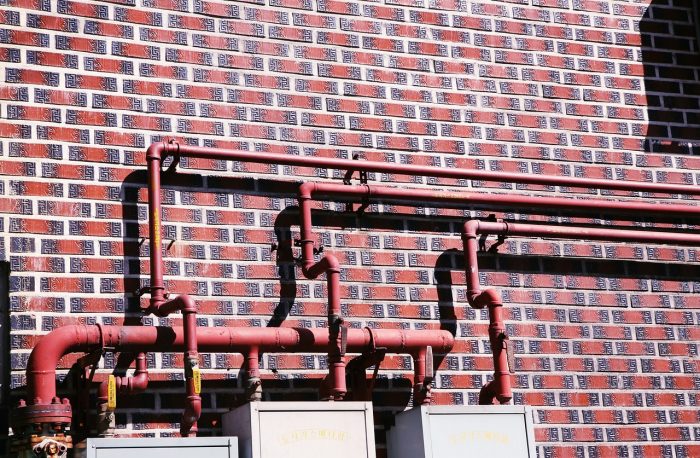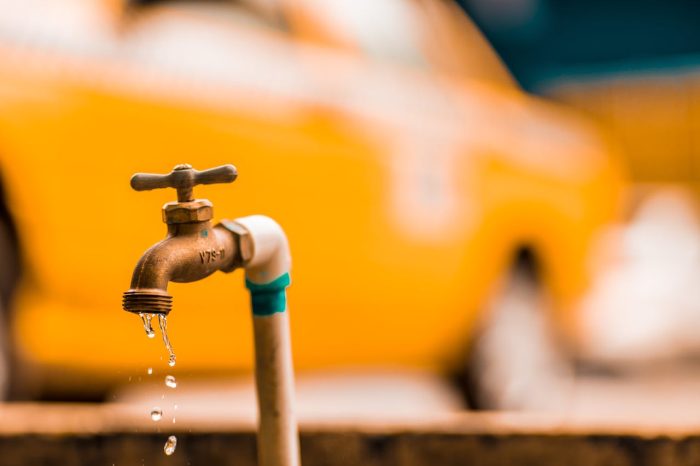
Systems that convey waste, gas, and water are essential components of contemporary infrastructure, and plumbing work is an integral part of this. All types of buildings use it to ensure the smooth and incident-free operation of their water supply and sewage systems.
What is plumbing work basics?
A building’s plumbing system consists of the fixtures, pipes, and other equipment put in to distribute water and remove waste. These are some of the basics of plumbing work.
- Water Supply System
- Types of pipes
Some of the most common materials used are galvanized steel, PEX, PVC, and copper.
- Purpose
Distribute potable water from the main supply to different parts of the structure.
- Components
There are numerous fittings, pipes, valves, and fixtures, including showers and faucets.
- Drainage System
- Vent
Drainage systems rely on air-inlet pipes to regulate pressure and promote wastewater flow.
- Trap
To keep sewage gases out of the building, there is a U-shaped pipe that runs beneath sinks and other water fixtures.
- Purpose
Various appliances and fixtures can empty it into the septic or sewer system.
- Components
Vents, drains, pipes, and traps.
- Fixture installation
- Installation
There must be a proper connection, no leaks, and excellent working order between the drainage systems and water supply.
- Fixtures
Incorporate fixtures such as showers, sinks, bathtubs, toilets, and appliances such as washing machines and dishwashers.
- Heating the water
- Purpose
Hot water is necessary for various tasks, such as dishwashing, showering, and cooking.
- Components
Included are the heating element, thermostat, and pressure relief valve.
- Types of water heaters
Two types of water heaters are available: those with storage tanks and those without.
- Maintenance and Repair
- Preventative Measures
It is crucial to maintain a regular inspection schedule, use drains correctly to minimize clogs due to large food particles and grease, and fix minor faults before they escalate into significant ones.
- Tools
Tools for plumbing work include an auger, a pipe wrench, a plunger, and plumber’s tape.
- Common Problems
Malfunctioning fixtures, blockages, and leaks.
- Codes and Regulations
- Inspection
Significant changes or new installations may require a professional inspector to ensure compliance with local codes.
- Codes
Typically, we cover fixture requirements, installation practices, and materials, although they can vary by region.
- Purpose
The aim is to ensure the safety, health, and proper operation of plumbing systems.
- Basic plumbing skills
- Troubleshooting
It involves identifying common plumbing problems and offering effective solutions.
- Threading and Cutting Pipes
Competence is required to accurately measure pipe sizes and securely connect them.
- Welding and Soldering
Methods for bonding metal pipes.
- Reading Blueprints
Mastering the art of plumbing layouts and plan interpretation.
Everyone, from do-it-yourself homeowners to those considering a career in plumbing, would greatly benefit from a solid grounding in these fundamentals.
What does the plumbing work include?
There is a vast array of activities and services that fall under the umbrella term “plumbing work” when it comes to installing, fixing, and maintaining plumbing systems in homes, businesses, and factories. The following are critical components of any plumbing project:
- Installation
- Gas Lines
Gas lines are set up for home heating, cooking, and water heating appliances.
- Septic Systems
Setting up drainage fields and septic tanks.
- Appliances and Fixtures
Install a variety of fixtures, including washing machines, water heaters, showers, faucets, dishwashers, toilets, bathtubs, and sinks.
- Piping Systems
Putting in pipes for water supply, drainage, and venting.

- Maintenance
- Water Heater Maintenance
Checking the efficiency of water heaters by flushing and checking them.
- Cleaning
Maintaining the cleanliness of septic tanks, drains, and pipes is crucial to prevent backups and obstructions.
- Frequent Inspections
Investigating the plumbing system for any signs of damage, such as corrosion or leaks,.
- Repairs
- Cleaning the Drain:
Using hydro-jetting equipment, snakes, or augers to clear obstructions in sewer systems and drains.
- Fixture Repairs
Replacing or repairing broken-down plumbing fixtures like showers, sinks, and toilets.
- Replacing and Repairing Pipes
Pipe replacement or repair due to corrosion or damage.
- Repairing Leaks
Repairing dripping faucets, pipes, and other plumbing equipment.
- Emergency Services
- Gas Leaks
Fixing potentially dangerous gas leaks.
- Flooding
Reducing and managing flooding problems due to plumbing failure.
- Burst Pipes
Maintaining and repairing damaged pipes is crucial to prevent water damage to your home.
- Remodels
- Repiping
Replace outdated plumbing systems with brand-new copper or PEX ones.
- Efficiency Improvements
Putting in water-saving appliances, energy-efficient water heaters, and low-flow fixtures.
- Revamp
Remodeling a bathroom or kitchen often involves modernizing plumbing systems.
- Inspection and Compliance
- Inspections and Permits
New installations and extensive repairs require obtaining the appropriate permissions and passing inspections.
- Building Code Compliance
Making sure that any plumbing work adheres to all applicable local building laws and regulations is crucial.
- Specialized Plumbing Services
- Irrigation Systems
Setting up and repairing landscape irrigation systems.
- Water Treatment Systems
Putting in and fixing water filtration, softening, and purification systems.
- Backflow Prevention
Installing and maintaining backflow prevention devices protects the water supply from pollution.
To ensure the proper operation and safety of buildings’ water and gas systems, plumbing encompasses all of these subfields, each of which calls for specialized knowledge, equipment, and abilities.
Three Stages of New Construction Plumbing
There are multiple steps involved in new building plumbing to guarantee a safe, efficient, and dependable system. The three main steps in the plumbing process are as follows:
- Groundwork
This stage involves laying the foundation for the plumbing system. Usually, we pour the foundation before this stage.
- Inspection
A building inspector verifies that the rough-in plumbing work satisfies all regulations in the area.
- Water Supply Lines
Putting in the pipes that provide water from the mains to the residence.
- Sewer and Drainage Lines
The process involves installing sewer lines and subterranean drainage systems. This includes branch lines and major sewer lines.
- Site Preparation
Grading and excavation may be necessary to prepare the site.
- Top-Out
Upon completion of the framing but before wall closure, this stage entails inserting plumbing components into the ceilings and walls.
- Inspection
Everything is double-checked to make sure it follows all the rules.
- Appliances and Fixtures
Installing rough-in fixtures such as shower pans and bathtubs.
- Drain, Waste, and Vent System
Putting in pipes for venting and waste removal.
- Water Lines
The process involves connecting plumbing devices such as showers, toilets, and sinks to the water main.
- Final Plumbing
This finishing phase involves placing the appliances and plumbing fixtures that are visible to the eye after the floors and walls are complete.
- Installation of Fixtures
This entails installing faucets, toilets, sinks, and other plumbing fixtures.
- Water Heater
Installation of and connecting the water heater.
- Appliances
Connecting appliances such as water filters, washing machines, and dishwashers.
- Testing
A thorough examination of the plumbing system is conducted to ensure its efficiency, correct drainage, and the absence of leaks.
- Final Inspection
During the final inspection, everything is double-checked for proper installation and functionality, as well as conformity with regional construction regulations.
These phases ensure the proper, effective, and code-compliant installation of a building’s plumbing system. This gives the facility a dependable waste management and water supply system.
Three main types of plumbing
- Water Supply System
- Galvanized steel, PVC, copper, and PEX pipes are the only ones used.
- The system that transports water from a public or private well includes the necessary fixtures, fittings, pipes, and valves.
- Brings potable water to residences and other structures.
- Drainage System
- uses cast iron pipes, PVC, and ABS often.
- The system of pipes and fittings that lead wastewater from fixtures like appliances, toilets, sinks, and showers to a municipal sewer system or septic tank.
- Clears buildings of sewage and wastewater.
- Gas Plumbing System:
- Corrugated stainless steel tubing, copper, black steel, and brass are common materials used.
- This category encompasses gas regulators, fittings, pipes, and valves.
- Delivers gas, either propane or natural, to home appliances for use in heating, cooking, and cooling.
To make sure these systems work and are safe to install, you need to use certain materials and follow certain procedures.
Conclusion
Plumbers need to be well-versed in various building codes and regulations, as well as skilled with a wide range of materials and tools. They must also be able to read and understand technical drawings and blueprints when it comes to plumbing work. To ensure the legal and safe operation of their trade, plumbers are frequently required to get specific certificates and licenses.
